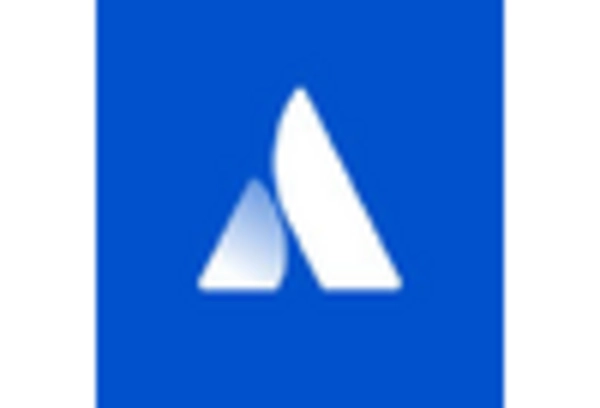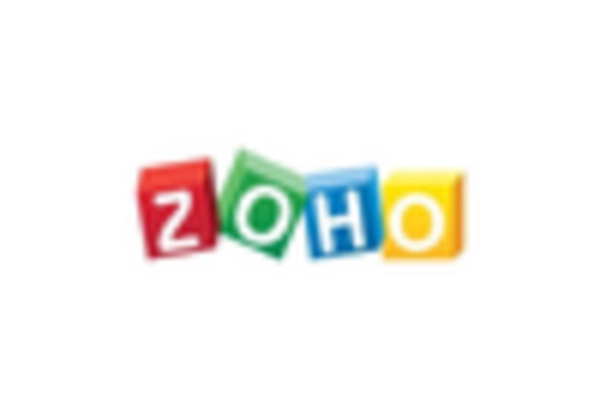Rising Demand for Agile Development
The Bug Tracking Software Market experiences a notable surge in demand due to the increasing adoption of agile development methodologies. Organizations are increasingly recognizing the need for rapid iteration and continuous feedback, which agile practices facilitate. This shift necessitates robust bug tracking solutions that can seamlessly integrate into agile workflows. According to recent data, the agile software development market is projected to grow at a compound annual growth rate of approximately 20% over the next few years. Consequently, the Bug Tracking Software Market is likely to benefit from this trend, as teams require tools that enhance collaboration and streamline the bug resolution process. The emphasis on agility not only improves product quality but also accelerates time-to-market, making effective bug tracking an essential component of modern software development.
Integration with Emerging Technologies
The Bug Tracking Software Market is poised for growth as integration with emerging technologies becomes increasingly prevalent. Technologies such as artificial intelligence and machine learning are being incorporated into bug tracking solutions, enabling more efficient identification and resolution of software defects. These advancements allow for predictive analytics, which can anticipate potential issues before they escalate. The integration of such technologies is expected to enhance the overall functionality of bug tracking software, making it more appealing to organizations seeking to optimize their development processes. As the demand for intelligent software solutions rises, the Bug Tracking Software Market is likely to witness a corresponding increase in investment and innovation, positioning it favorably for future growth.
Growing Importance of Remote Work Solutions
The Bug Tracking Software Market is experiencing a transformation driven by the growing importance of remote work solutions. As organizations adapt to flexible work environments, the need for collaborative tools that facilitate effective communication and issue tracking becomes critical. Bug tracking software that supports remote teams enables seamless collaboration, ensuring that developers can address issues in real-time, regardless of their physical location. This trend is reflected in the increasing adoption rates of cloud-based bug tracking solutions, which provide accessibility and scalability. The shift towards remote work is likely to continue influencing the Bug Tracking Software Market, as companies seek to maintain productivity and efficiency in a distributed workforce.
Regulatory Compliance and Security Concerns
The Bug Tracking Software Market is significantly impacted by the growing need for regulatory compliance and security in software development. As industries face stringent regulations regarding data protection and software integrity, organizations are compelled to adopt robust bug tracking solutions that ensure compliance with these standards. The increasing frequency of cyber threats further amplifies the necessity for secure bug tracking systems that can safeguard sensitive information. Companies are likely to invest in bug tracking software that not only addresses compliance requirements but also enhances overall security measures. This trend indicates a potential growth trajectory for the Bug Tracking Software Market, as organizations prioritize risk management and compliance in their software development processes.
Increased Focus on Software Quality Assurance
The Bug Tracking Software Market is significantly influenced by the heightened emphasis on software quality assurance across various sectors. As organizations strive to deliver high-quality products, the need for effective bug tracking solutions becomes paramount. The Bug Tracking Software is expected to reach substantial figures, indicating a growing recognition of the importance of quality in software development. This trend drives demand for bug tracking software that can efficiently identify, report, and manage defects throughout the development lifecycle. Furthermore, as businesses face increasing pressure to meet customer expectations, the Bug Tracking Software Market is likely to see a rise in adoption rates, as companies seek to enhance their quality assurance processes and minimize the risk of software failures.
















Leave a Comment